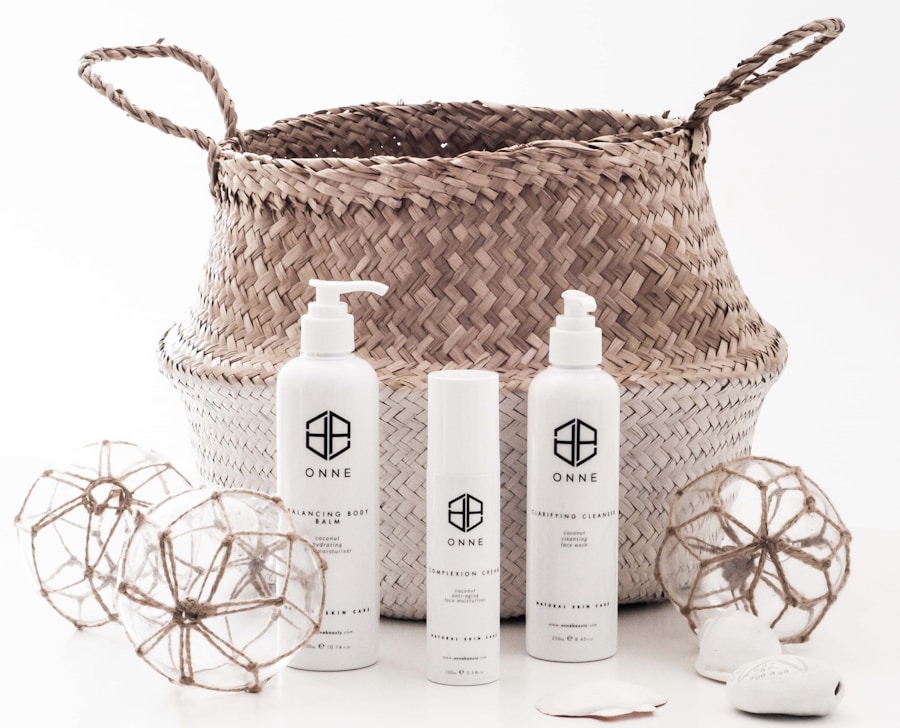Ingrown hairs, also known as razor bumps or pseudofolliculitis barbae, occur when the hair grows back into the skin instead of out of it. This can happen for a variety of reasons, including improper shaving techniques, curly or coarse hair, tight clothing, and certain skin conditions. When hair is cut too close to the skin, it can curl back and grow into the skin, causing inflammation, redness, and sometimes even infection. Curly or coarse hair is more likely to become ingrown because it has a tendency to curl back into the skin. Tight clothing can also contribute to ingrown hairs by causing friction and trapping hair against the skin. Additionally, individuals with certain skin conditions, such as keratosis pilaris or acne, may be more prone to ingrown hairs due to the buildup of dead skin cells and excess oil that can block hair follicles.
Ingrown hairs can be uncomfortable and unsightly, but understanding the causes can help individuals take steps to prevent them. Proper shaving techniques, such as using a sharp razor, shaving in the direction of hair growth, and avoiding multiple passes over the same area, can help reduce the risk of ingrown hairs. Additionally, exfoliating the skin regularly can help remove dead skin cells and prevent them from clogging hair follicles. Wearing loose-fitting clothing and using products specifically designed to prevent ingrown hairs can also help reduce the likelihood of developing them.
Preparing for Laser Hair Removal Brazilian
Laser hair removal is a popular and effective method for achieving long-term hair reduction, including in the Brazilian area. Before undergoing laser hair removal, there are several steps individuals can take to prepare for the procedure. First, it is important to find a reputable and experienced provider who specializes in laser hair removal. Researching different providers and reading reviews can help individuals make an informed decision about where to undergo treatment. Additionally, individuals should schedule a consultation with the provider to discuss their goals, expectations, and any concerns they may have about the procedure.
In preparation for laser hair removal Brazilian, individuals should avoid sun exposure and tanning beds for at least six weeks prior to treatment. Sun exposure can increase the risk of complications and reduce the effectiveness of the laser treatment. It is also important to avoid plucking, waxing, or electrolysis for at least six weeks before treatment, as these methods can disturb the hair follicle and interfere with the laser’s ability to target the hair. Shaving the treatment area a day or two before the procedure is typically recommended to ensure that the hair is short enough for the laser to effectively target it. Finally, individuals should follow any additional pre-treatment instructions provided by their provider to ensure the best possible results from their laser hair removal Brazilian.
Post-Treatment Care: What to Expect
After undergoing laser hair removal Brazilian, individuals can expect some mild discomfort and redness in the treated area. This is normal and typically resolves within a few hours to a few days. It is important to avoid sun exposure and tanning beds for at least six weeks following treatment to prevent complications and ensure optimal results. Additionally, individuals should avoid hot baths, saunas, and strenuous exercise for 24-48 hours after treatment to allow the skin to heal.
In the days following laser hair removal Brazilian, it is common for treated hairs to begin falling out. This is a sign that the treatment is working, and individuals should avoid plucking or waxing these hairs as they shed. It is also important to keep the treated area clean and moisturized to promote healing and reduce the risk of complications. Following any post-treatment instructions provided by the provider can help ensure a smooth recovery and optimal results from laser hair removal Brazilian.
Best Aftercare Practices for Preventing Ingrown Hairs
After undergoing laser hair removal Brazilian, it is important to take steps to prevent ingrown hairs from developing in the treated area. One of the best aftercare practices for preventing ingrown hairs is to exfoliate the skin regularly. This helps remove dead skin cells that can clog hair follicles and contribute to ingrown hairs. Using a gentle exfoliating scrub or brush in the shower a few times a week can help keep the skin smooth and free of ingrown hairs.
In addition to exfoliation, keeping the skin moisturized is important for preventing ingrown hairs. Dry skin can contribute to irritation and inflammation, making it more likely for hairs to become ingrown. Using a gentle, non-comedogenic moisturizer can help keep the skin hydrated without clogging pores or causing breakouts. It is also important to avoid wearing tight clothing that can cause friction and trap hair against the skin, as this can increase the risk of ingrown hairs.
Recommended Skincare Products for Post-Laser Hair Removal
After undergoing laser hair removal Brazilian, it is important to use gentle skincare products that will not irritate the treated area. One recommended skincare product for post-laser hair removal is a gentle cleanser that is free of harsh ingredients such as fragrances, dyes, and alcohol. A gentle cleanser can help keep the treated area clean without causing irritation or dryness.
Another recommended skincare product for post-laser hair removal is a non-comedogenic moisturizer. Keeping the skin hydrated is important for promoting healing and preventing irritation, but it is essential to use a moisturizer that will not clog pores or cause breakouts. Look for a moisturizer that is specifically formulated for sensitive or post-treatment skin to ensure that it will not cause any adverse reactions.
Tips for Maintaining Smooth, Hair-Free Skin
After undergoing laser hair removal Brazilian, there are several tips individuals can follow to maintain smooth, hair-free skin. One tip is to continue following a regular exfoliation routine to prevent ingrown hairs from developing in the treated area. Using a gentle exfoliating scrub or brush a few times a week can help keep the skin smooth and free of dead skin cells that can clog hair follicles.
Another tip for maintaining smooth, hair-free skin is to avoid plucking or waxing any hairs that may regrow in the treated area. Laser hair removal reduces hair growth over time, but some hairs may still regrow in the treated area. It is important to shave these hairs instead of plucking or waxing them to avoid disturbing the hair follicle and interfering with the results of the laser treatment.
When to Seek Professional Help for Ingrown Hairs
While most ingrown hairs can be managed at home with proper care and prevention techniques, there are times when it may be necessary to seek professional help for ingrown hairs. If an ingrown hair becomes infected or does not improve with at-home care, it is important to seek medical attention from a dermatologist or healthcare provider. Signs of infection include increased redness, swelling, pain, and pus or drainage from the affected area.
Additionally, if ingrown hairs are causing significant discomfort or affecting an individual’s quality of life, it may be beneficial to seek professional help for treatment options. A dermatologist can provide guidance on how to manage ingrown hairs and may recommend treatments such as topical medications or in-office procedures to address persistent or severe cases. It is important to seek professional help if ingrown hairs are causing significant discomfort or do not improve with at-home care to ensure proper treatment and prevent complications.






